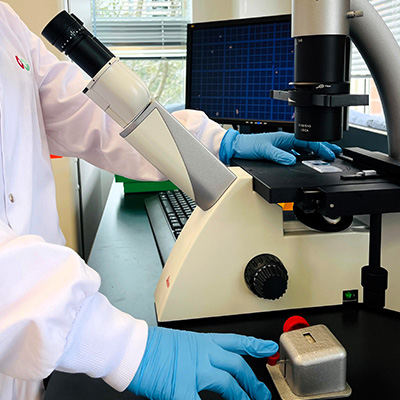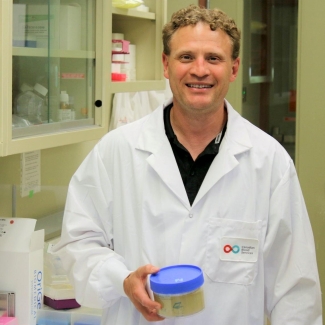Pushing the boundaries of hematopoietic stem cell transplantation: Insights from cutting-edge pre-clinical research
Thursday, March 28, 2024 Tanvir Hasan
This blog was written by Tanvir Hasan, a senior research assistant in the lab of Canadian Blood Services research scientist, Dr. Hari Maganti, with collaboration from Ajay Ratan Pasala (PhD candidate) and Dhuha Hassan (research assistant). The Maganti lab’s research focuses on hematopoietic stem cell biology and transplantation.
Hematopoietic stem cell (HSC) transplantation therapy – which is commonly abbreviated as HCT - stands as a beacon of hope for patients confronting severe blood disorders like leukemia, lymphoma, and sickle cell anemia. This blog post summarizes a comprehensive review of recent pre-clinical research which was published in the open access journal Current Oncology in January 2024, illuminates the strides being made to refine and advance HCT practices for enhanced patient outcomes.

Unraveling the complexities of HSC homing and engraftment
HCT success depends on the precise navigation of the HSCs to a recipient’s bone marrow upon transplantation (called ‘homing’) and their efficient integration into the bone marrow microenvironment (called the ‘niche’) where they reside. The engraftment phase, where transplanted HSCs begin producing healthy blood cells following homing and integration into the niche, is a critical milestone in the transplantation journey. However, the efficiency of the engraftment is fraught with challenges. Factors such as pre-transplantation treatments, patient age, and existing conditions can impede the bone marrow niche's ability to accept the transplanted HSCs. A combination of lab-based tests and studies in animal models have been key to examining many of these interactions in pre-clinical research.
Pioneering strategies for HCT optimization
Our review of the latest scientific studies highlights key concepts using a pre-clinical lens to deepen our understanding and propose innovative strategies aimed at improving HSC transplant efficacy and enhance HCT outcomes. These strategies include (but are not limited to): in-lab expansion of stem cells to increase the cell number and their ability to engraft efficiently; application of gene editing technologies to increase HSC homing efficiency; and creation of targeted therapies to improve the bone marrow niche's ability to accept the transplanted cells. While some of these initiatives are in the preliminary stages of research, they have immense potential to overcome existing hurdles to successful engraftment, signalling a new era of more efficient, effective, and safe HCT procedures.
-
Read the full article here: Current Oncology | Free Full-Text | Homing and Engraftment of Hematopoietic Stem Cells Following Transplantation: A Pre-Clinical Perspective (mdpi.com)
Envisioning the future of HCT research
The significant advancement in pre-clinical studies that deepen our understanding of HSC biology and refine transplantation methods moves us closer to unleashing the full potential of HCT. Collaborative, multidisciplinary research and innovation is key in propelling this field forward as we focus on understanding and enhancing HSC homing and engraftment mechanisms. Research will help pave the way for substantial improvements in harnessing stem cell therapy for the treatment of blood disorders.
Canadian Blood Services – Driving world-class innovation
Through discovery, development and applied research, Canadian Blood Services drives world-class innovation in blood transfusion, cellular therapy and transplantation—bringing clarity and insight to an increasingly complex healthcare future. Our dedicated research team and extended network of partners engage in exploratory and applied research to create new knowledge, inform and enhance best practices, contribute to the development of new services and technologies, and build capacity through training and collaboration. Find out more about our research impact.
The opinions reflected in this post are those of the author and do not necessarily reflect the opinions of Canadian Blood Services nor do they reflect the views of Health Canada or any other funding agency.
Related blog posts
Discover how the latest breakthroughs and promising advancements in hematopoietic stem cell (HSC) research by Canadian Blood Services scientists are enhancing HSC growth to improve transplantation and gene therapy outcomes for leukemia and blood disorders.
Dr. Nicolas Pineault speaks about his passion for stem cell research, and the exciting new projects he’s currently engaged in.
Cord blood is a rich and important source of stem cells for transplantation. Recent research from Canadian Blood Services has shown how tests of thawed cord blood samples could be improved so that they produce results that better reflect the quality of the cord blood unit. Improving these tests could increase the number of cord blood units that can be released for transplantation.

